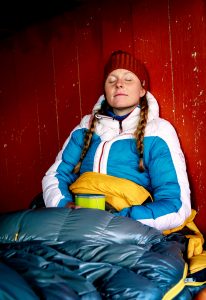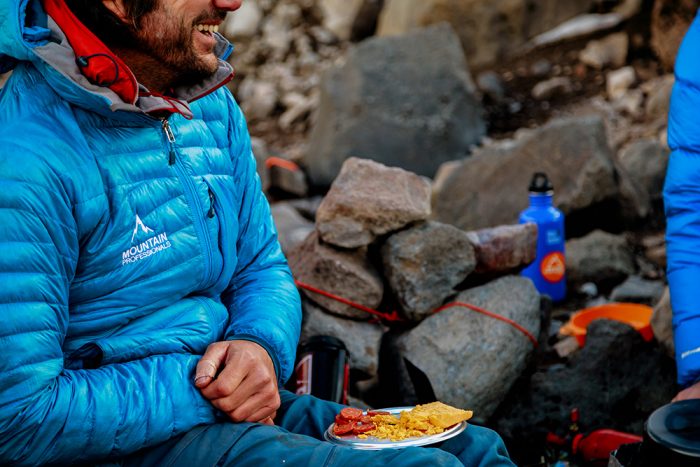Tagged a few 14ers but ready to go higher? Jessica R Hamel headed to the top to Orizaba and came back with these insights.

Earlier in March, I found myself playing Tetris with a new backpack, a large duffel bag, and a pile of gear. In just a few days, I would be joining three other women to climb the tallest mountain I had ever been on, Pico De Orizaba (18,491′), to raise money for Big City Mountaineers.
I’ve summited plenty of 14ers in Colorado and, heck, I’ve even run 100 miles over a day through the mountains. But this trip welcomed me to a whole new world of high-altitude mountaineering. Something was telling me it wouldn’t be like any experience I’d had in the mountains. I was right.
Thinking of climbing to new heights? I learned a few lessons during the trip that might help make your trek a little more enjoyable.
Author’s note: Deuter, La Sportiva, and Nemo sponsored the trip in support of Big City Mountaineers. If you’re Interested in learning more about Big City Mountaineers, find details here.
Tip 1: Get Cozy

Much of your time spent on a high-altitude mountaineering expedition will be resting. Well, what I mean by resting is lying around while altitude wreaks havoc on your body.
This is the acclimatization process. You need the rest. I made the mistake of trying to jog 40 feet for a cute picture and was kindly met with a pounding headache. So bring relaxation essentials.
For me, that was a solid, cold-rated sleeping bag, a big warm puffy, playing cards, and tea. I used the NEMO Sonic 0-degree as my bag and the La Sportiva Tara 2.0 for my jacket.
Most of my day and night was spent cozy in the bag. It was warm enough for the cold nights in the hut and its venting “Thermo Gills” cooled down the bag when things warmed up during the day. The “gills” are zippable vents in the middle of the bag that let more air flow to the core when unzipped.
When I needed to escape my cocoon to play cards or attempt an acclimatization hike, a warm jacket was key. The La Sportiva Tara 2.0 kept me comfortable. Packed with 700-fill European goose down, it has a wind and water resistant finish and is a versatile puffy.
I planned this as my heavy jacket for summit day, but it also worked for resting. We had a pretty warm summit, but with a layer or two underneath I would’ve been prepared for most temps. My favorite part of the jacket: deep pockets — perfect for plenty of snacks.
Tip 2: Plan For Poor Appetite
Eating right is essential to enduring altitude. Unfortunately, your body will tell you otherwise. At altitude, the body burns a lot more calories, but the brain doesn’t send hunger signals to compensate. It’s quite the conundrum.

Solution: Bring the tastiest snacks you can find and a variety. I bought caramels as a reward for getting through different parts of the climb. But at 18,000 ft, they weren’t the soft, delicious morsels I’d been drooling about in Colorado.
In addition to depressed appetite, your sense of taste and smell may also change. Things that taste good at sea level might be off-putting on the mountain. Plus, cooking times double every 5,000 feet, so have ready-to-eat options. In general, monotonous foods are less palatable than foods with a variety of flavor, so plan accordingly.
Think long and hard about flavor and texture, and what you could stomach if eating even if you weren’t hungry. Note to my future self: Stay away from cheese.
Tip 3: Your Shoes Can Make Or Break Your Climb.
Proper-fitting and comfortable shoes are an essential part to any adventure. We’ve all heard those horrific stories of blisters the size of a small country ruining someone’s day.

There are a few questions to consider when selecting shoes for a high-altitude expedition: Do they fit properly? Will they keep you warm? Are they comfortable for long periods? Will you require a second pair for variable terrain? And most importantly, what would you wear for the worst-case scenario?
For Orizaba, I packed a pair of lightweight mountain running shoes and heavy-duty mountaineering boots. The La Sportiva Helios SR and the La Sportiva Spantik were my choices. Let me start off by saying I have never worn hiking boots in my life, ever.
I’ve always opted for some type of trail-runner because I like a lightweight shoe and free ankles. The Helios were comfortable, lightweight, and I could basically wear them forever.
Since we were going to be on more technical terrain, I went with the SR model, which offers a super-sticky sole. The Helios were my choice for 90-percent of the trip.
But the Spantiks came on when it mattered most. The top of Orizaba is covered by a glacier, and on our visit there were hard, rough waves of packed, icy snow. Did we need a boot as bomber as the Spantik? Maybe not. But, if we encountered bad weather and were stranded up there, our feet would have been safe from frostbite.
And I’m happy to report, although I looked like a baby deer walking in them, there were no blisters or hot spots created from the Spantiks.
The great thing about the outdoors is there’s always a new way to experience it. You don’t need a lot of gear to get out, you just need the right gear.
